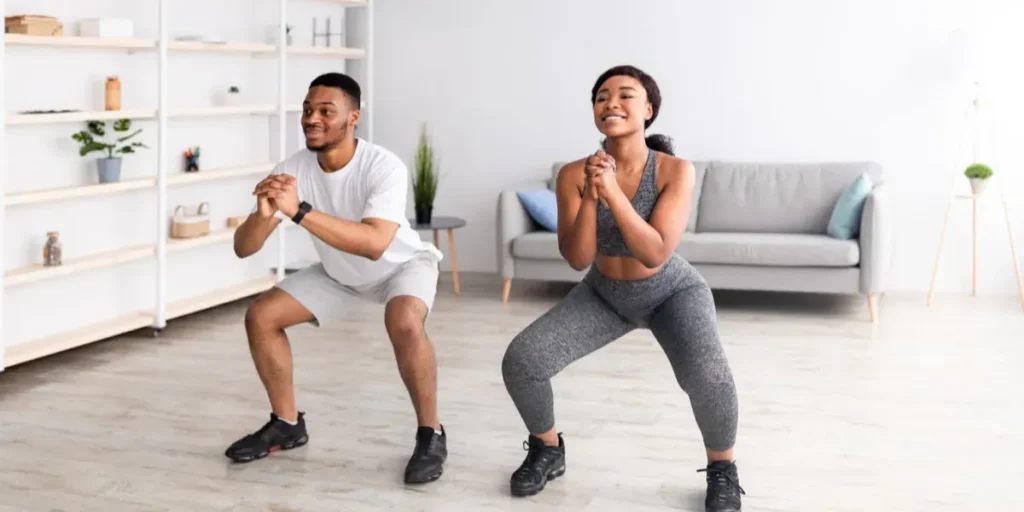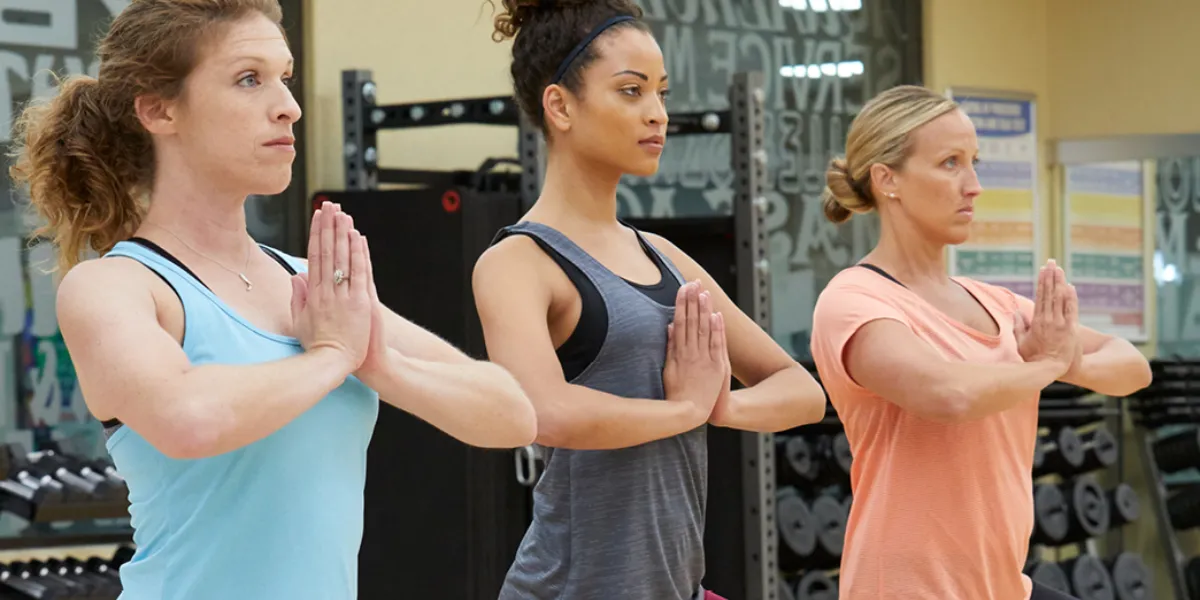The squat: a simple yet powerful exercise that targets multiple muscle groups and offers a plethora of benefits. But a common question plagues beginners – how many squats should I do?
There’s no one-size-fits-all answer, but fret not! This guide will help you determine the ideal number of squats based on your fitness level and goals.
Table of Contents
ToggleUnderstanding Your Goals
Before diving into reps and sets, it’s crucial to identify your goals. Are you aiming to:
- Build strength and muscle mass?
- Improve endurance and cardiovascular health?
- Tone your legs and core?
Knowing your goals will steer you toward the most effective squat routine.
The Squats Spectrum: Beginner, Intermediate, Advanced
Here’s a roadmap to guide you based on your fitness level:
Beginner:
- Focus on mastering proper form. Quality over quantity is key!
- Start with 2-3 sets of 10-15 repetitions.
- Perform squats 2-3 times per week.
- Listen to your body and rest when needed.
Intermediate:
- You’ve got the form down!
- Increase reps to 12-15 per set.
- Add weight with dumbbells or a barbell to challenge yourself further.
- Aim for 3-4 sets per workout.
- Incorporate squat variations like jump squats or Bulgarian split squats.
Advanced:
- Push your limits!
- Perform 3-5 sets of 6-10 repetitions with heavier weights.
- Focus on compound movements that engage multiple muscle groups.
- Incorporate advanced variations like pistol squats or weighted jump squats.
Remember: These are general guidelines. Adjust the intensity and volume based on your individual needs and progress.
The Importance of Proper Form
Using proper form is paramount to maximizing results and preventing injuries. Here are key pointers:
- Keep your back straight and core engaged.
- Squat down as if sitting in a chair, knees tracking over your toes.
- Don’t let your heels lift off the ground.
- Push through your heels to stand back up.
Don’t hesitate to consult a certified trainer for personalized guidance on proper squat technique.
Frequency and Rest
Squats are a demanding exercise. Here’s how to schedule your workouts for optimal results:
- Beginners: Start with 2-3 non-consecutive days per week.
- Intermediate/Advanced: Aim for 3-4 workouts spaced evenly throughout the week.
- Allow your muscles adequate rest for recovery – at least 48 hours between squat workouts.
Listen to your body! Take rest days when needed to avoid overtraining.
Spicing Up Your Squats
As you progress, explore variations to keep your workouts interesting and target different muscle groups:
- Jump squats: Add an explosive element to build power.
- Bulgarian split squats: Challenge your balance and core stability.
- Goblet squats: Hold a dumbbell or kettlebell at chest level for upper-body engagement.
- Sumo squats: Widen your stance to target your inner thighs.

10 FAQs on Squats
1. How many squats should I do to lose weight?
Squats can aid weight loss as part of a balanced diet and exercise routine. Focus on burning more calories than you consume.
2. Will squats make my legs bulky?
Squats build muscle, but not necessarily bulk. They can tone and define your legs.
3. Can I do squats every day?
Rest is crucial for muscle recovery. Aim for 2-4 non-consecutive days per week.
4. What if my knees hurt while squatting?
Ensure proper form and consult a healthcare professional if pain persists.
5. Are there any alternatives to squats?
Lunges, leg presses, and step-ups offer similar benefits.
6. How can I track my squat progress?
Keep a workout log to monitor sets, reps, and weights used.
7. Is it okay to squat without weights?
Absolutely! Bodyweight squats are a great way to start.
8. How long does it take to see results from squats?
Consistency is key. You’ll see improvements in strength and tone within weeks, with noticeable results in 1-2 months.
9. Should I squat fast or slow?
Control the movement throughout the squat. Focus on proper form over speed.
10. Can squats help improve my posture?
Yes, squats strengthen core muscles that support good posture.
100 Squats a Day:
- Not necessarily the best approach. It can be overwhelming for beginners and lead to overtraining or injury.
- More suitable for advanced individuals who can handle the volume and intensity.
20 Squats a Day:
- A good starting point for beginners to build basic strength and form.
- May not be enough to see significant results for experienced individuals.
30 Squats a Day:
- A moderate option for beginners to progress gradually and improve endurance.
- Can be effective for intermediate exercisers to maintain muscle tone.
Here’s a better approach:
- Focus on sets and reps: Aim for 2-3 sets of 10-15 repetitions for beginners, increasing reps or adding weight as you get stronger.
- Listen to your body: Rest when needed and avoid pushing yourself to the point of pain.
- Consider your goals: If you want to build muscle, focus on heavier weights with fewer reps. For endurance, use lighter weights with more reps.
Remember: Consistency is key. It’s better to do fewer squats with proper form regularly than to push yourself too hard and risk injury.
It’s always recommended to consult with a certified trainer or healthcare professional for personalized guidance on your squat routine.
Additional Tips:
- Warm up before your squat workout with dynamic stretches.
- Cool down with static stretches to improve flexibility.
- Stay hydrated throughout your exercise routine.
- Fuel your body with a balanced diet to support muscle growth and recovery.
- Most importantly, have fun and enjoy the process!






